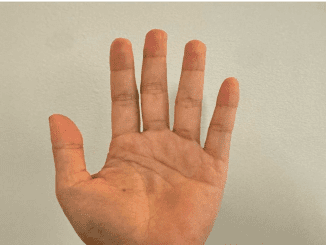The Victorian era (1837–1901) was a time of innovation, societal change, and, let’s be honest, some downright bizarre trends. From deadly pigments in fashion to accessories made of human hair, this period was as fascinating as it was perplexing. Let’s dive into 10+ Victorian trends that rocked the 19th century and shaped the way we look at history.
1. Deadly Fashion: Arsenic Green Dye

Victorians adored the vibrant hue of Paris Green, a pigment used in fabrics and wallpapers. However, its beauty came with a lethal cost—it was made with arsenic. Despite reports of illness and death, the dye remained popular for decades. When exposed to moisture, the chemical released toxic fumes, turning fashion into a silent killer.
2. Beetle-Wing Embellishments
One of the more peculiar fashion statements involved beetle wings. Dressmakers adorned gowns with these shimmering wings, creating a sequin-like effect. The wings were harvested without harming the insects, as they naturally dropped during mating season. While unconventional, the practice added a stunning sparkle to Victorian fashion.
3. Hair Accessories with a Personal Touch
Hair jewelry was both sentimental and macabre. People created bracelets, necklaces, and even purses from human hair, often as keepsakes to honor deceased loved ones. These intricate creations reflected the Victorians’ fascination with mourning and memory.
4. Stuffed Birds on Hats
Women’s hats during the Victorian era often featured feathers, and at times, entire stuffed birds. This trend, though visually striking, contributed to a decline in bird populations. Conservation efforts by groups like the Audubon Society eventually led to the trend’s demise, marking an early victory for animal rights.
5. Corsets That Reshaped the Body
The Victorian corset was designed to cinch the waist and create an exaggerated hourglass figure. However, tight lacing could restrict breathing, shift internal organs, and alter the rib cage. While corsets didn’t cause as much harm as sensational stories claimed, their impact on anatomy was undeniable.

6. Crinoline Chaos: Wide Skirts That Took Over
In the mid-19th century, crinolines—a cage-like structure made of steel rings—gave skirts dramatic volume. While they allowed for more leg mobility, navigating doorways and carriages became a logistical nightmare. Some crinolines were so large they caused humorous, and sometimes hazardous, mishaps.
7. Open-Crotch Underwear

Victorian women wore underwear with strategically placed openings to accommodate the complexities of their layered attire. While this design made practical sense for the time, it contrasts sharply with modern notions of comfort and modesty.
8. Dresses for All Children
Until around the age of four, Victorian children—boys and girls alike—wore dresses adorned with lace and fullness. This practice symbolized innocence and allowed for easier diaper changes. The style of these garments often reflected the family’s wealth and social standing.
9. The Bustle: A Backward Fashion Trend
Replacing the crinoline, the bustle became popular in the 1870s and 1880s. This padded undergarment exaggerated the rear silhouette, often creating an unnatural shape. The phrase “The woman with a bustle can never sit down naturally” humorously captures the impracticality of this fashion.
10. Mourning Fashion: Grieving in Style

With a life expectancy of about 45 years, mourning was a common part of Victorian life. Women dyed their dresses black, donned black jewelry, and adhered to strict etiquette. Mourning attire could last years, depending on the relationship with the deceased, and even extended to black wedding dresses for widows remarrying during their mourning period.
11. Bloomers: Early Feminist Fashion
Amelia Bloomer introduced baggy trousers worn under shortened skirts as a way to liberate women from restrictive clothing. While the practicality of bloomers was undeniable, they faced widespread ridicule and never gained mainstream acceptance.
12. Poisonous Beauty: Lead-Based Makeup
Victorian beauty standards often came at a cost. Women used lead-based cosmetics to achieve a pale complexion, unknowingly exposing themselves to harmful toxins. This practice highlights the dangers of beauty trends unchecked by science.
13. Fan Language: Silent Communication
Victorian women mastered the art of subtlety through the language of fans. By positioning or moving their fans in specific ways, they could convey messages like flirtation or rejection without saying a word. It was an elegant, silent way to communicate in a time of strict social codes.
14. Elaborate Sideburns for Men
Men of the Victorian era took pride in their facial hair, particularly sideburns. These “mutton chops” were seen as a symbol of masculinity and status, and their elaborate grooming became a trend that defined the era’s male aesthetic.
15. Gothic Architecture in Miniature
Beyond fashion, the Victorian love for detail extended to their homes. Miniature Gothic-inspired furniture and dollhouses became popular, reflecting the era’s fascination with intricate craftsmanship and architectural grandeur.
Conclusion: A Fascinating Legacy of Style and Innovation
The Victorian era was a time of contrasts—innovation paired with eccentricity, beauty marred by danger, and practicality entwined with excess. These trends, whether bizarre or brilliant, left a lasting imprint on history. They remind us of the complexities of human creativity and the cultural shifts that define each era.
From arsenic-laden dyes to the language of fans, the Victorian age was as captivating as it was unconventional. While some trends have faded into history, their stories continue to intrigue and inspire us today.


